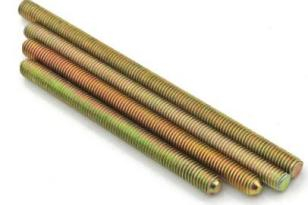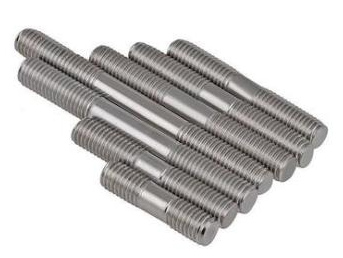1. What is a threaded rod?
Like screws and nails, the threaded rod is another type of commonly used fastener. Basically, it’s a helical stud with threads on the rod: Similar in appearance to a screw, the threading extends along the rod to cause rotational movements while being used; thus the stud combines both the linear and rotational movement to drive into the material and create holding power in the material.
It’s worth mentioning that the direction of this rotation depends on whether the rod has a right-hand thread, left-hand thread, or both.
Generally speaking, this threaded bar is used much the same way as a very long, thick bolt screw: it’s used for fastening or supporting systems or materials in different applications.
2. What are the types of threaded rods?
The threaded rods can be categorized according to their features, functions, and applications. In terms of the structural features, there are two most popular types:

Fully Threaded Rod—This type of threaded bar is featured by the threading that runs along the full length of the stud, which allows nuts and other fixings to mate fully at any point along the rod.
We offer both zinc plated or plain threaded rod in different sizes.

Double-End Threaded Rod—This type of threaded bar is featured by threading at either end of the stud and the center part is not threaded. The two threaded segments at both ends are of equal length.
3 . Where to use the threaded rod?
To sum up, the threaded has two main applications: fastening materials or supporting structures (stabilizing). To achieve these objectives, the threaded bar can be used with standard nuts and washers. There’s also a special type of nut called rod coupling nut, which is used to join two pieces of rod firmly together.
threaded rod nuts
More specifically, the applications of the threaded rod are the following:
Materials fastening—The threaded rod is used to join metal to metal or metal to wood; it’s widely used for wall construction, furniture assembling, etc.
Structure supporting—The threaded bar is also used to stabilize structures as it can be inserted into various materials like concrete, wood, or metal creating a steady base for the construction.
Post time: Aug-20-2022